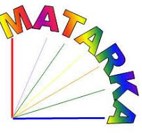Distribution and phytosociological characterisation of the alien Eleusine indica in Budapest, Hungary
Abstract
Eleusine indica was first reported from Budapest in 1928, and it is continuously spreading since then. Main goals of our study were to document the present distribution range of E. indica, and to describe its phytosociological characteristics within the administrative boundary of Budapest, Hungary. The survey was carried out in the second half of 2015. Phytosociological samples were taken at 15 localities, scattered across Budapest, using 2 m × 2 m or 1 m × 4 m quadrats, as the shape of the vegetation patches required. It was found that E. indica has spread to all 23 districts of Budapest and colonized the two Danube islands as well. In a signifcant proportion of cases its stands were formed by over 100 plants. Altogether 106 occurrences were precisely localized by GPS coordinates and additional topographical data, but much more were observed. Typical occurrences were on intensively trampled soil surfaces, curbs, pavement cracks and car parking areas. It is supposed that vehicle trafc plays an important role in spreading of E. indica. Considering
References
Bartha D., Király G., Schmidt D., Tiborcz V., Barina Z., Csiky J., Jakab G., Lesku B., Schmotzer A., Vidéki R., Vojtkó A., Zólyomi Sz. (szerk.) 2015: Magyarország edényes növényfajainak elterjedési atlasza. Nyugat-magyarországi Egyetem Kiadó, Sopron, 330 pp.
Borhidi A. 2007: Magyarország növénytársulásai. Akadémiai Kiadó, Budapest, 569 pp.
Boros Á. 1948: Változások Budapest növényvilágában. Természettudomány 3(5): 156–157.
Chauhan B. S., Johnson D. E. 2008: Germination ecology of Goosegrass (Eleusine indica): an important grass weed of rainfed rice. Weed Science 56(5): 699–706. https://doi.org/10.1614/ws-08-048.1
Costea M., Tardif F. J. 2005: Te biology of Canadian weeds. 131. Polygonum aviculare L. Canadian Journal of Plant Science 85: 481–506. https://doi.org/10.4141/p03-187
Cseresnyés I., Csontos P., Bózsing E., Tamás J. 2009: Kukorica és kalászos gabonavetések gyomnövényzetének vizsgálata eltérő vízgazdálkodású talajokon. Magyar Gyomkutatás és Technológia 10(2): 37–52.
Dancza I. 2012: Aszályfű (Eleusine indica [L.] Gaertn.). In: Csiszár Á. (szerk.) Inváziós növényfajok Magyarországon. Nyugat-magyarországi Egyetem Kiadó, Sopron, pp. 331–333.
Dancza I. 2016: Az aszályfű (Eleusine indica (L.) Gaertn.) cönológiai vizsgálata Budapesten. Coenological studies on goose grass (Eleusine indica (L.) Gaertn.) in Budapest. XI. Aktuális flóra- és vegetációkutatás a Kárpát-medencében nemzetközi konferencia (Budapest, 2016. február 12–14.), Előadások és poszterek összefoglalói. Magyar Természettudományi Múzeum, Budapest, pp. 145–147.
Jakucs P. 1981: A társulások felvételezése, a társulástabella készítése. In: Hortobágyi T., Simon T. (szerk.) Növényföldrajz, társulástan és ökológia. Tankönyvkiadó, Budapest, pp. 199–202.
Kalapos T. 1991: C3 and C4 grasses of Hungary: Environmental requirements, phenology and role in the vegetation. Abstracta Botanica 15: 83–88.
Kárpáti Z. 1949: Megjegyzések és adatok Budapest és környékének flórájához II. Borbásia 9(3–5): 35–38.
Mojzes A., Kalapos T. 2004: Napi hőmérsékletingadozás hatása öt, eltérő inváziós képességű fűfaj csírázására. Botanikai Közlemények 91(1–2): 25–37.
Nishimoto R. K., McCarry L. B. 1997: Fluctuating temperature and light influence seed germination of goosegrass (Eleusine indica). Weed Science 45(3): 426–429.
Nobis M., Kowalczyk T., Nowak A. 2011: Eleusine indica (Poaceae): a new alien species in the flora of Tajikistan. Polish Botanical Journal 56(1): 121–123.
Papp J. 1950: Az „aszályfű” (Eleusine indica (L) Gärtn.) termesztése. Agrártudomány 2(12): 721–723.
Pénzes A. 1928: Eleusine indica (L.) Gaertn., Budapest új behurcolt növénye. (Eleusine indica (L.) Gaertn. als neue Adventiv-Pflanze in der Flora von Budapest.) Magyar Botanikai Lapok 27: 113.
Pinke Gy. 2006: Extenzíven művelt szántók gyomcönológiai vizsgálata a Dunántúli-középhegységben és a Nyugat-magyarországi peremvidéken. Kanitzia 14: 57–74.
Podani J. 2001: SYN-TAX 2000. Computer programs for data analysis in ecology and systematics. User’s Manual. Scientia, Budapest, 53 pp.
Polgár S. 1918: Neue Beiträge zur Adventivflora von Győr (Westungarn) II. Újabb adatok Győr adventív flórájához II. Magyar Botanikai Lapok 17: 27–41.
Pyšek P., Jarošíka V., Kropáč Z., Chytrý M., Wild J., Tichý L. 2005: Effects of abiotic factors on species richness and cover in Central European weed communities. Agriculture, Ecosystems & Environment 109(1–2): 1–8. https://doi.org/10.1016/j.agee.2005.02.018
Simon T. 1992: A magyarországi edényes flóra határozója. Harasztok – virágos növények. Tankönyvkiadó, Budapest, 892 pp.
Soó R. 1973: Synopsis Systematico-Geobotanica Florae Vegetationisque Hungariae V. Akadémiai Kiadó, Budapest, 723 pp.
Venkatesan S., Jayaganesh S. 2010: Characterisation of magnesium toxicity, its influence on amino acid synthesis pathway and biochemical parameters of tea. Research Journal of Phytochemistry 4(2): 67–77. https://doi.org/10.3923/rjphyto.2010.67.77


















